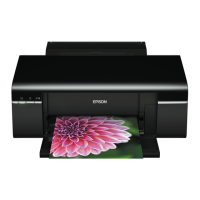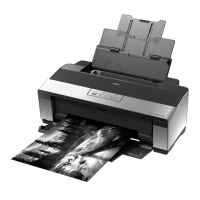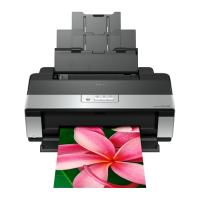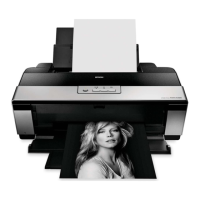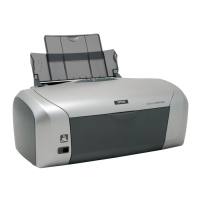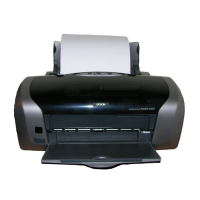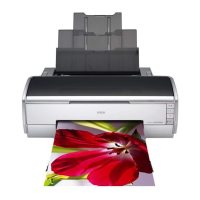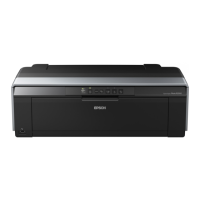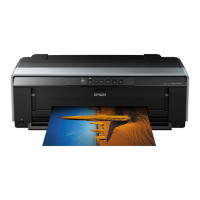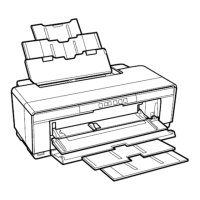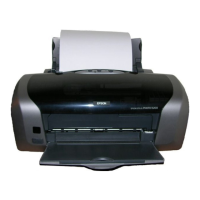How to check if paper exists in Epson Printer?
- AAlyssa HernandezAug 16, 2025
To check if paper exists in the Epson Printer, check the PE Sensor. A reading of 0.4V or less indicates that paper is present.
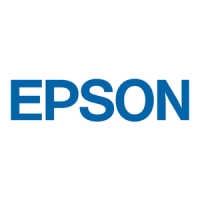
How to check if paper exists in Epson Printer?
To check if paper exists in the Epson Printer, check the PE Sensor. A reading of 0.4V or less indicates that paper is present.
How to check if there is no paper in Epson Stylus Photo R285 Printer?
To check if there is no paper in the Epson Printer, check the PE Sensor. A reading of 2.4V or more indicates that there is no paper.
How to check if Epson Printer cover is opened?
To determine if the Epson Printer cover is opened, check the Cover OPEN Sensor. A reading of 2.4V or more indicates that the printer cover is open.
How to check if Epson Printer cover is closed?
To determine if the Epson Printer cover is closed, check the Cover OPEN Sensor. A reading of 0.4V or less indicates the printer cover is closed.
How to check if Epson Stylus Photo R285 is in CDR mode?
To determine if the Epson Printer is in CDR mode (stacker at the upper position), check the CDR Guide Sensor. An open reading of 2.4V or more indicates CDR mode.
How to check if Epson Stylus Photo R285 Printer is in ASF mode?
To determine if the Epson Printer is in ASF mode (stacker at the lower position), check the CDR Guide Sensor. A closed reading of 0.4V or less indicates ASF mode.
How to check if CD-R Tray is inserted in Epson Printer?
To check if the CD-R Tray is inserted in your Epson Printer, examine the CD-R Tray Sensor. An open reading of 2.4V or more indicates that the CD-R Tray is inserted.
How to check if there is no CD-R Tray in Epson Printer?
To check if there is no CD-R Tray in your Epson Printer, examine the CD-R Tray Sensor. A closed reading of 0.4V or less indicates that there is no CD-R Tray.
How to check if Epson Stylus Photo R285 is within PG position?
To check if the Epson Printer is within PG position, check the APG Sensor. A reading of 2.4V or more indicates that it is within PG position.
| Print technology | Inkjet |
|---|---|
| Maximum resolution | 5760 x 1440 DPI |
| DVD/CD printing | Yes |
| Dimensions (WxDxH) | 450 x 282 x 187 mm |
| Power requirements | 220-240VAC |
| Connectivity technology | Wired |
| Compatible operating systems | Windows 98SE/ME/2000/XP/Vista Mac OS 10.2.8 |
| Print speed (black, normal quality, A4/US Letter) | 37 ppm |
| Print speed (color, normal quality, A4/US Letter) | 38 ppm |
| Envelopes sizes | 10, C6, DL |
| Standard media sizes | 10.2 x 18.1 cm 20 x 25 cm 13 x 18 cm 10 x 15 cm 13 x 20 cm 9 x 13 cm |
| Paper tray media types | Envelopes, Photo paper |
| Non-ISO print media sizes | Legal (media size), Letter (media size) |
| ISO A-series sizes (A0...A9) | A4, A5, A6 |
| ISO B-series sizes (B0...B9) | B5 |
| Total input capacity | 120 sheets |
| Package depth | 514 mm |
| Package width | 355 mm |
| Package height | 245 mm |
| Package weight | 7107 g |
| Bundled software | Epson Creativity Suite Epson Web-To-Page Epson Easy Photo Print Epson Print CD Epson Scan Assistant Epson Attach to Email Epson Copy |
| Quantity per pack | 1 pc(s) |
| Sound pressure level (printing) | 36 dB |
| Minimum system requirements | USB |
| Power consumption (standby) | 1.2 W |
| Power consumption (printing) | 12 W |
| Country of origin | Philippines |
| Market positioning | Home & office |
| Pallet width | 1200 mm |
| Pallet height | 1000 mm |
| Pallet length (UK) | 2110 mm |
| Quantity per pallet | 32 pc(s) |
| Quantity per pallet (UK) | 40 pc(s) |
| Quantity per pallet layer | 4 pc(s) |
| Quantity per pallet layer (UK) | 5 pc(s) |
Outlines the structure of the manual, consisting of chapters and appendix sections.
Explains the various symbols used in the manual to convey information or warnings.
Overview of printer capabilities, including resolution, print speed, and media support.
Details on print methods, resolutions, paper handling, and ink cartridges.
Describes the printer's USB interface specifications and compatibility.
Covers electrical, environmental, durability, and acoustic noise specifications.
Explains the function of the printer's buttons and status LEDs.
Introduces the printer's operating principles and main components.
Explains BRS and PFP systems for improving print quality and feed accuracy.
Details the step-by-step operations the printer performs when powered on.
Describes the different methods for initializing the printer.
Guides users on how to troubleshoot problems using driver messages, LED status, and symptoms.
Explains how the printer indicates errors via LEDs or driver messages.
Provides procedures for troubleshooting specific errors indicated by LEDs or the STM3 screen.
Offers solutions for problems identified by symptoms rather than error messages.
Introduces procedures for disassembling and reassembling printer components.
Details the removal of external parts of the printer.
Covers the removal of the printer's main electronic control boards.
Covers the detailed disassembly of the printer's internal mechanical components.
Procedures specific to Artisan 50/Stylus Photo T50 models.
Introduces necessary adjustments after parts replacement and lists adjustment items.
Explains how to use the adjustment program and judge printed patterns.
Guides on performing BRS and PFP adjustments for print quality.
Provides information to keep the printer in optimal condition.
Covers actions for abnormal prints or "Maintenance request error".
Specifies the type, amount, and points for lubricating printer parts.
States that exploded diagrams and parts lists are not provided in this manual.
